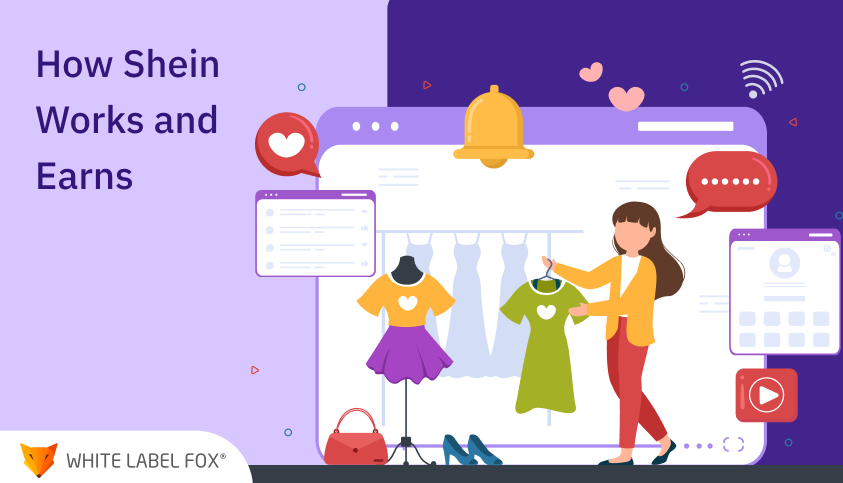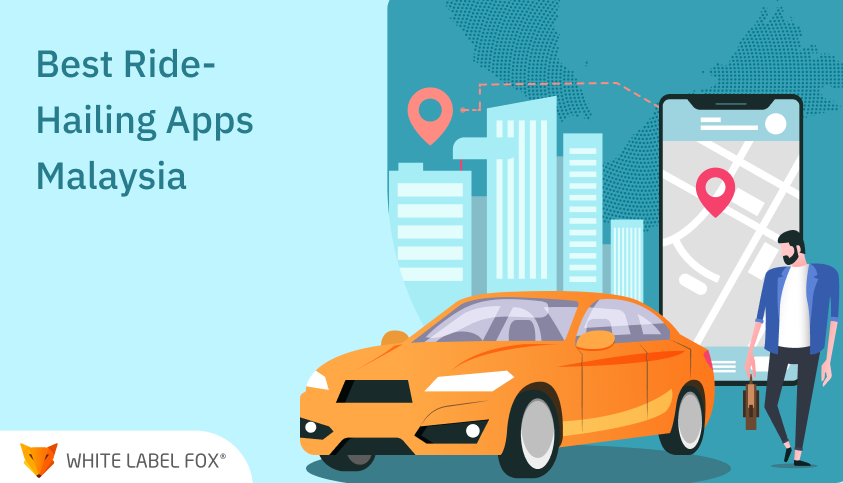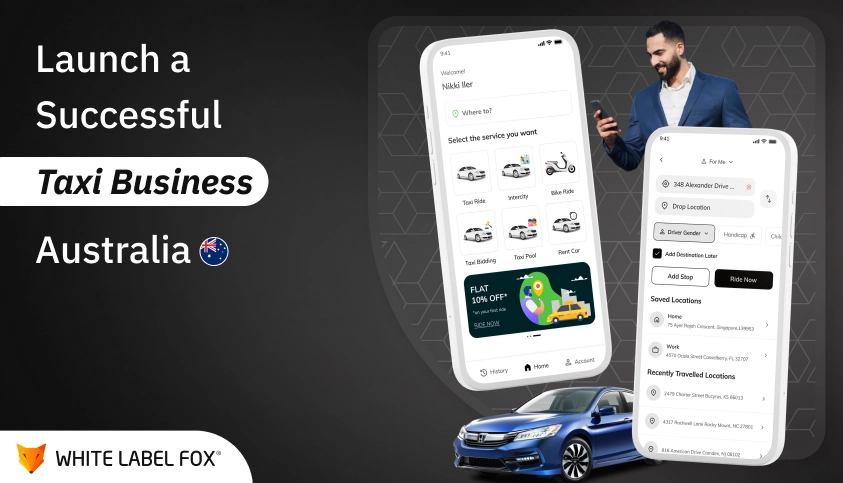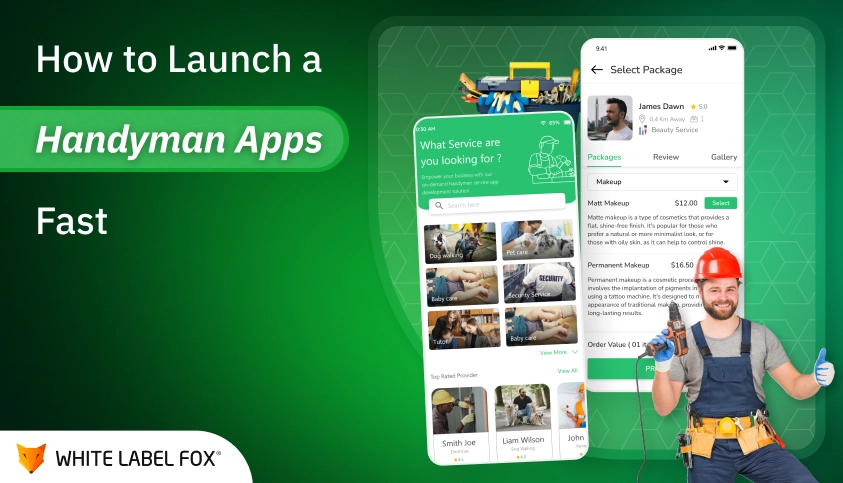Last year, in December 2023, Shein became the world’s most visited fashion and apparel website, leaving behind many long-running fashion giants like Nike, Zara, and H&M. It has garnered surprising reactions among industry analysts. Ever since Statista published the report, Shein has become the talk of the town for many because, when it comes to fashion, it’s challenging to penetrate the market and reach the top level in a short period.
Gaining people’s trust in a market saturated with top industry players is harder. And yet, Shein has managed to do it. In such a short period, Shein has become a fast-fashion leader in the fashion section, even though it’s a newcomer in the eCommerce industry. The company has taken the entire global fashion industry by storm with its unique business model and revenue streams.
Its targeted marketing approach has made it a go-to brand among Gen Z customers. But how did Shein do that? In this article, we will try to understand how Shein became what it is by understanding its origin story, business model, marketing strategy, and revenue model. Keep reading the article if you’re interested to learn about Shein’s unique business model and how it makes money.
How Shein Was Started? Shein Origin Story
Shein was born in 2008, by Chris Xu, who was working at a marketing consulting firm at that time. Chris was working as an SEO specialist. Chris was an entrepreneur by heart, which led him to research the demand for Chinese Products in the international market. In his research, he found that Chinese products are in high demand globally, partly because they are much more affordable.
Chris was more interested in the fashion sector. Upon researching further, he found that women’s wedding dresses are the most highly desired garments worldwide. But the problem was that these dresses were expensive. Chris saw the opportunity and decided to create an eCommerce platform for selling wedding dresses at affordable prices. This was the beginning of his entrepreneurial journey.
He left his job and started an eCommerce brand named ZZKKO to sell wedding gowns. Initially, he only sold wedding gowns. However, the company gradually expanded its product range to include women’s clothing and rebranded as SheInside. By 2010, the company started selling cosmetics, jewelry, footwear, handbags, and other fashion accessories as well.
Initially, the company was merely dropshipping. It didn’t produce its core products, clothing, in-house until 2012. It was the year when SheInside started its own product-supplying system, which turned it into a complete retailer. By 2013, the company expanded to 100 employees and transformed its marketing approach to evolve into a fully integrated retailer.
In 2015, SheInside was renamed Shein, making it a global sensation in the fast-fashion market. The company has been giving tough competition to industry players like H&M and Zara. In 2023, Shein earned $32.5 billion through online retailing – 43% higher in revenue than the previous year. The growth is evident enough to understand how successful the company is.
But how did Shein leave the global brands behind and get its success? Shein’s success can be attributed to its unique business model. The company readily produces fast-fashion items and launches them on a global scale. Now that you know its origin story, let’s understand the Shein business model and how the fashion brand works.
Take a Lead in eCommerce Market
Partner with White Label Fox to build a secure, innovative, and powerful eCommerce app.

How Does Shein Work? Shein Business Model
Shein works with an online-centric, direct-to-consumer business model, which helped the company to gain rapid success. The eCommerce platform is the primary sales channel for the brand. However, it has other revenue channels as well. We will discuss each of them later in this blog.
Its online platform offers a seamless user experience across the site. What’s more interesting is that Shein’s online infrastructure is directly connected to its factories, where factories receive real-time data on what’s working and what’s not. The data indicates the demand signals, which helps Shein make the products its customer wants.
The company starts with a slow launch, with orders of only 100-200 pieces of Shein-branded products first. Shein sources its designs directly from manufacturers. This business model allows Shein to curate the designs within just three days. Then, the precision of the products is tested on the online store. The site has various indicators that help the fast-fashion brand determine whether the product is successful or not.
Once they get the verification of the product’s success, the next step begins. Once tested, the products are taken out to be sold to a diverse range of customers across the globe. Such a unique and flexible business model allows Shein to respond to increased demand for market changes with speed and agility. This way, emerging trends are quicker to transform into Shein products.
Shein’s short lead time allows it to work on thousands of new products daily. It frequently launches new fashion items and caters to its global consumers. Shein extensively works on dropshipping. This is the major reason behind its quick delivery of products. The products are directly shipped from the factory to the customer. There are no third-party deliverers and vendors.
The fashion industry is one of the major reasons behind the adverse environmental effects we are experiencing right now. But the Shein isn’t one among them. Shein always strives to reduce production waste. And for that, it has this innovative on-demand business model in place. It doesn’t produce in bulk. It consistently maintains a low unsold inventory rate by ordering small batches based on trend research.
Its digital supplier management system offers its manufacturing partners real-time insights, offering more accurate production planning and minimizing waste. This unique business model of Shein doesn’t just allow the company to deliver fast fashion items quickly but also helps it maintain a low inventory to reduce waste and sustain the environment.
How Shein Got Its Success? Shein Marketing Strategy:
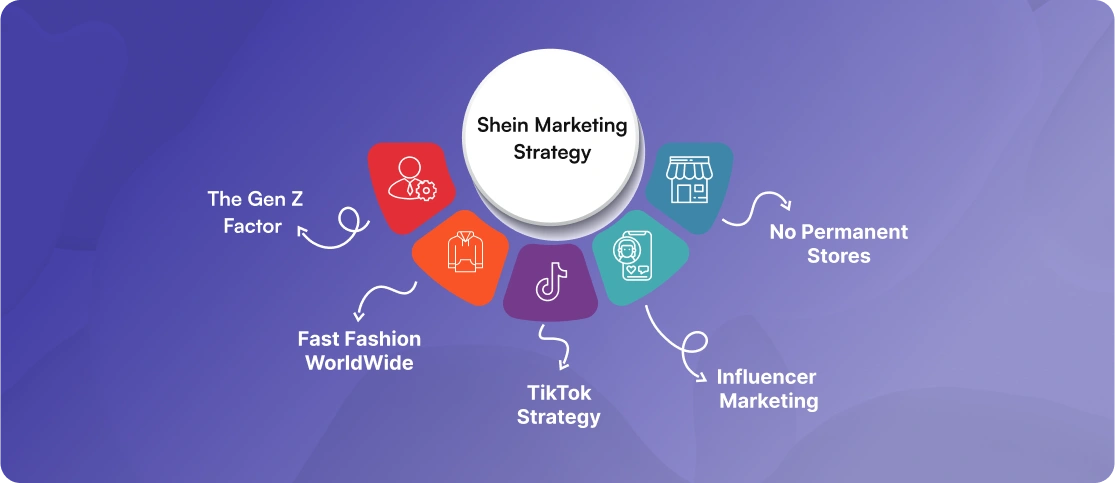
Despite being a newcomer in the fast fashion market, Shein has been giving tough competition to global leaders like H&M and Zara. But how did Shein do that? Thanks to its super unique and highly effective marketing strategy. Learn how Shein markets its products and reaches out to its potential buyers from this section.
The Gen Z Factor
Shein’s major customer base belongs to Gen Z. The fast fashion brand is the fourth most popular application among this generation, As per Statista. Shein knows how to capture Gen Z’s attention very well. It takes a lot of leverage from social media, where its prime customers live a lot of time. The brand knows that Zoomers are style aficionados, but doesn’t have enough money to spend on high-fashion clothing. So it offers fashionable clothing and accessories at conveniently low rates. This made Sheig a popular fashion brand among Zoomers around the world.
Fast Fashion WorldWide
Shein uses real-time data to predict demand and supply for its products. It keeps a high-level watch on what people like and what they are dropping. The brand regularly analyzes its customer’s behavior in order to remain competitive and deliver only high-fashion items that its consumers like. This is why it manufactures and delivers fashion items in small batches. Small-batch manufacturing model saves the company on inventory storage costs. Moreover, it also partners with logistics providers to enhance shipping capabilities and deliver fashion items faster to users living outside of China.
TikTok Strategy
Shein knows that its target customers are widely available on TikTok. So, it has strategically made its presence more on this social media platform. Here, it uses fun and catchy videos that perfectly align with what its target audience wants to watch. It frequently encourages fans to join this online community. The market here is subtle. The brand focuses more on making its customers feel like they are a part of something cool and exciting. For Shein, selling comes secondary on social media.
Influencer Marketing
Shein has a smart influencer marketing strategy in place. It partners with influencers who are big names on social media platforms. They offer these people fashion items for free and ask them to market them on social media platforms like TikTok and Instagram. Influencers don Shein fashion products and showcase them to their fans, helping Shein advertise its brand. Fans of these influencers get inspired and purchase from Shein, leading to more sales and stronger brands.
No Permanent Stores
Despite being an online brand, Shein has also opened some pop-up stores in several cities. Its PR manager has revealed that these stores aren’t permanent outlets, not at least for this moment. The global online retailer aims to target cities with a high concentration of online buyers. The physical stores are intended to offer its customers a unique and enjoyable shopping experience. Aligned with the company’s digital focus, these temporary stores feature social-friendly spots where customers can click Instagrammable photos while shopping.
How Does Shein Make Money? Shein Revenue Model
Unlike other eCommerce fashion brands, Shein has a diverse revenue model. It primarily makes money from its online platform, but also has other revenue streams, too. Let’s look at each of them.
Online Selling on The Website
Shein’s major revenue stream is its website. The fast fashion firm has been a prominent style partner for Gen Zs, who are always on the lookout for style items at affordable prices. Shein’s unique business model allows it to identify fashion trends quickly and deliver its products across the world. The efficient supply chain and cost-effective production allow Shein to generate significant revenue.
Advertising
Advertising is another revenue model that Shein follows. The company leverages the high web traffic it brings on the site, by showcasing advertisements on its platform. They strategically place ads in a way that doesn’t hamper user experience but allows the site to create another revenue channel in a subtle way. The adverts are kept relevant and minimal so that users aren’t bothered and are more likely to tap on them.
Collaborations
Collaboration might not be a significant revenue channel, but it surely helps Shein expand its brand reach. The company frequently partners with celebrities, designers, and other fashion brands to launch collaborative fashion collections. By doing this, Shein enhances its brand image and catches the eyes of new customers, hence generating more leads.
Data Monetization
Shein has a large data pool of users who have visited and surfed the site. This data can be monetized through targeted advertising or sold to other brands who can bring useful insights out of it. Shein also leverages data analytics to gain valuable insights into customer behavior, which allows the company to craft more personalized marketing strategies that drive revenue.
Partner With White Label Fox to Create Wonders
Build innovative and high-end eCommerce mobile applications today.
Key Learning Takeaways from Shein’s Business Model
Shein’s business model has some components that make the company successful:
Data-Driven Decision Making
One of the prominent reasons why Shein strives in the market is its approach to decision-making. The fast-fashion brand launches its products after extensively analyzing customer data and feedback to learn what they like and what trends they follow. Their every decision is backed by keen data analysis and research, enabling them to stay updated with customer preferences and adapt in accordance with them.
Efficient Supply Chain
Shein has built strong relationships with its manufacturers and suppliers, which has helped to create a smooth supply chain. The company believes in long-term partnerships and has partnered with reliable vendors that deliver quality products on time. With real-time data insights, the company can identify trends and create high-fashion products in the shortest time frame
Influencer Marketing
One of the major sections where Shein beats its competitors is the ability to enter right into its customer’s feeds through influencer marketing. Shein heavily leverages social media influencers to promote its products and engage with its target audience. Shein’s knows its target audience is heavily active on social media. Hence, this marketing strategy has proven to be highly effective in growing Shein’s brand awareness and customer base.
Online-Only eCommerce Model
Although Shein has opened some pop-up stores around the world now, online platforms are still its major revenue sources. People love the comfort of shopping from their place. And after COVID-19, Shein had a massive boost in sales due to its online-only business model. It quickly became a favorite brand among Gen Zers who love shopping online, putting the brand among the top eCommerce platforms out there.
Partner With Us To Build An On-Demand eCommerce App

Online shopping has become a significant part of daily life, especially after the COVID-19 pandemic. This change is why platforms like Shein have gained massive success globally. Shein’s journey proves that eCommerce isn’t just the future; it’s the present.
If you’re considering building an app like Shein, now is the perfect time. The eCommerce market is booming, and with the right strategy and technical support, you can launch a successful platform. Even with competition, having a robust app infused with AI-powered recommendations, seamless shopping experiences, and advanced features can set you apart.
At White Label Fox, we specialize in developing apps like Shein. Our Shein clone app solutions are designed to be customizable, scalable, and equipped with cutting-edge technology. Whether you want a Shein app clone or a unique platform tailored to your brand, we have the expertise to make it happen.
Let our skilled team help you build a world-class app that connects with a global audience. Get in touch today for a consultation, and let’s bring your eCommerce vision to life!

